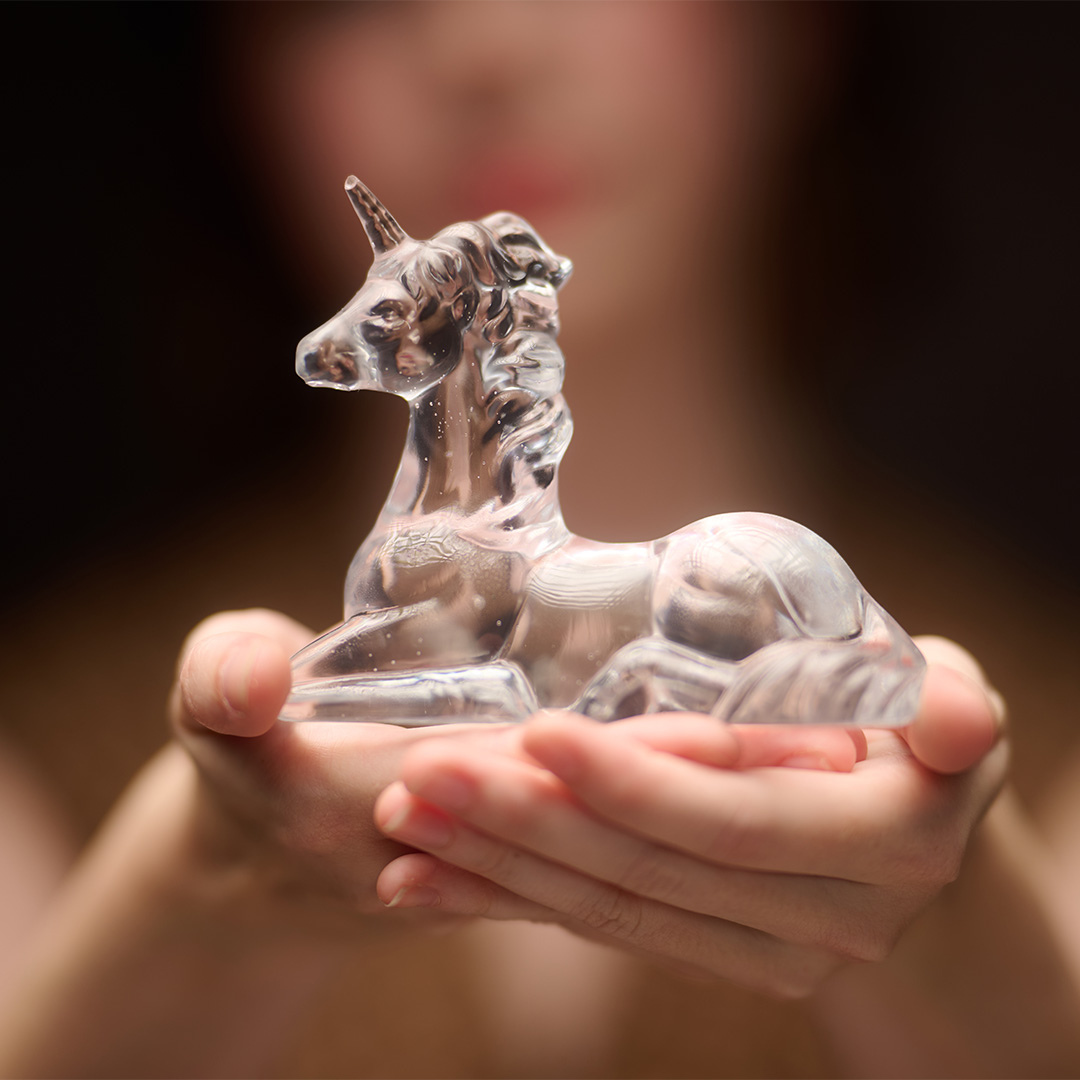For its first production of 2024, Eugene Ballet presents a world premiere ballet from Resident…
Everything’s Better Under the Sea

The Disney™ interpretation of The Little Mermaid is a story and soundtrack beloved by many. However, Toni Pimble’s newest ballet brings the original Hans Christian Andersen fairy tale to life. Andersen’s The Little Mermaid is almost 200 years old and doesn’t quite have the fairy tale ending you’d expect.
Orchestra Next brings the impressionist composer Claude Debussy’s music to life in this sophisticated retelling, following the Little Mermaid’s journey as she risks everything she’s ever known for the love of a human. A tremendous undertaking, this production has utilized talented artists working in an array of mediums to create a completely immersive experience. Incredible costumes, brand new choreography, and gorgeous visuals will transport the audience on a journey to the bottom of the sea. There are just two chances to see this exciting production at the Hult Center’s Silva Concert Hall: Saturday, May 20 at 7:30 pm and Sunday, May 21 at 2:00pm.
Bringing the Ocean Floor to Life
Silk designer Steven Oshatz, working locally from his studio Tancho Images, played an integral role in creating The Little Mermaid’s underwater visuals. “Creating the 30 by 50 foot silk drop for the underwater scenes was a daunting task,” Oshatz said.
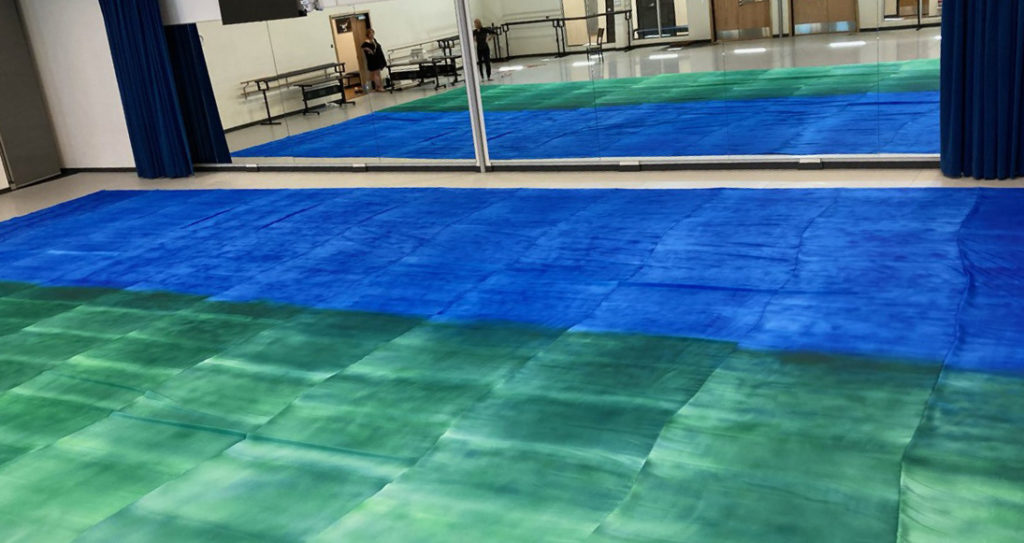
The massive silk drop is beautifully airbrushed with vibrant shades of blue and green with a dynamic ombre from top to bottom to provide a sense of depth to the ocean floor. Oshatz meticulously airbrushed individual 30-foot-long panels of silk each day, with assistance from Eugene Ballet’s Associate Technical Director Eärendil Biskup, to create the full scenic drop.
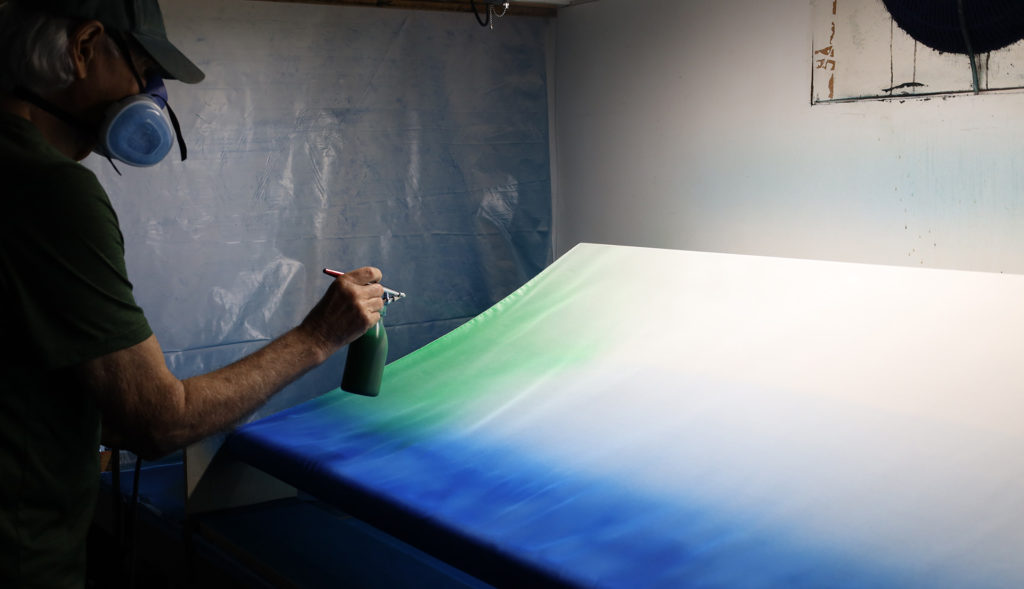
Oshatz and Biskup also created smaller silk panels hand painted to resemble stormy waves. Dancers will move across the stage with the silks attached to long poles for the dramatic scene changes—from the ocean floor to above water and back again—throughout the ballet. See the silks in action HERE.
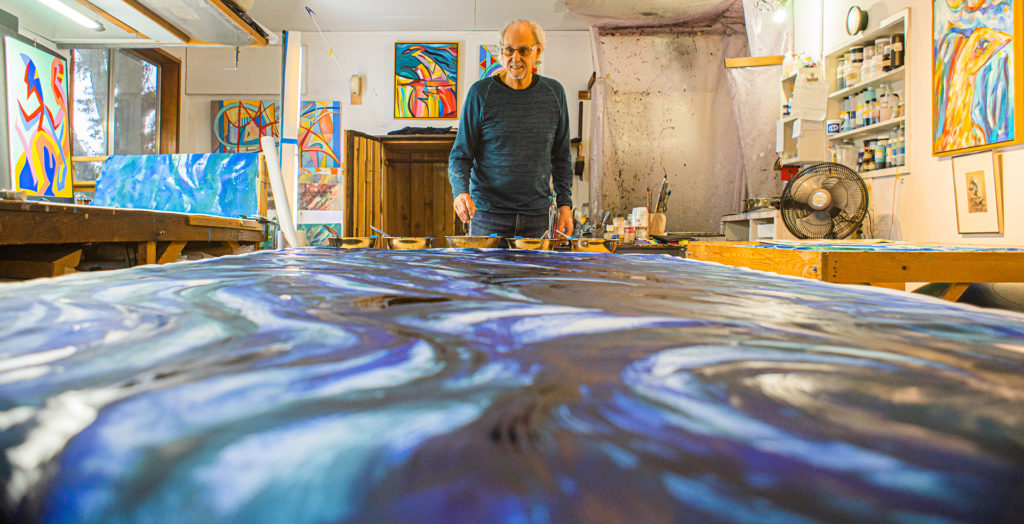
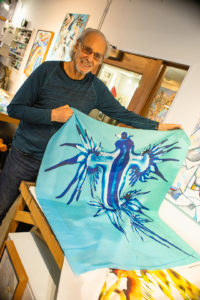 Oshatz also applied his extensive knowledge of silk design and printing in creating three life-like sea creatures: a blue ringed octopus, a leafy sea dragon, and a blue glaucus. “First, I work on creating the digital file, then it goes into my printer, and I print it. Then it has to be steamed, washed, and ironed. So, it’s quite labor intensive even though it’s a digital creation,” said Oshatz. Another local artist, Caroline Barnes, then assembled these striking silks into the sea creatures that Eugene Ballet Academy students will float across the stage in underwater scenes. Never heard of a blue glaucus or leafy sea dragon? Watch Oshatz’s exotic sea creatures in rehearsals HERE.
Oshatz also applied his extensive knowledge of silk design and printing in creating three life-like sea creatures: a blue ringed octopus, a leafy sea dragon, and a blue glaucus. “First, I work on creating the digital file, then it goes into my printer, and I print it. Then it has to be steamed, washed, and ironed. So, it’s quite labor intensive even though it’s a digital creation,” said Oshatz. Another local artist, Caroline Barnes, then assembled these striking silks into the sea creatures that Eugene Ballet Academy students will float across the stage in underwater scenes. Never heard of a blue glaucus or leafy sea dragon? Watch Oshatz’s exotic sea creatures in rehearsals HERE.
Biskup has also been busy crafting stunning three-dimensional coral reef set pieces. Through an extensive process of trial and error, Biskup and her set design team have created giant masterpieces of life-like coral that use UV light on stage to create a sense of movement and a true underwater feeling. “I take a lot of pride in being a stagehand and everything that goes with that,” said Biskup, “and to be a part of a company that lets me be an artist too is pretty spectacular. In each detail, whether it’s the musicians, costumes, or dance, everyone has that personal investment. It is their art and taking pride in all of the details is what the audience ultimately gets to experience.”

Tails, Tiaras, and Twenties Attire
Beyond her extraordinary vision and choreography in this production, Pimble has designed, sewn, and sourced the fabric for every underwater character’s costume. From breathtaking shimmery mermaid tails made from fabrics akin to fish gills to a grand skirt of seaweed suited for the king of the underwater world, Pimble has thought of every last detail. To accessorize the mermaids’ costumes, intricate headpieces of shells, jewels, and plenty of glitter—each weighing between 1.5 to 3.5 pounds—were handcrafted by Angella Wilger and Dana Hansler. In contrast to the underwater costumes’ vibrant colors, the characters’ costumes on the Prince’s ship are in pastels, creams, and whites. “As if bleached out by the sun,” Pimble described, “that is the difference that we are creating in our look between the underwater world and the world above.” Costume designer Axel Dāzee designed these above water costumes with a relaxed 1920’s feel. Learn more and see these dazzling costumes for yourself HERE.

La Mer and More
 In many ways the underwater scenes of Pimble’s The Little Mermaid resemble the atmosphere of Debussy’s brilliant music, Orchestra Next’s Music Director Brian McWhorter noted. “The music really feels like it’s underwater,” said McWhorter. After recently tackling Stravinsky’s Petrushka, preparing Orchestra Next for this arrangement of Debussy’s most famous works is proving equally as difficult. “It feels like the rules are completely different for figuring out how to play it,” he explained. “Things don’t line up vertically like they do with Stravinsky, the themes don’t pop out. It’s just this wash of color with these hints of phrases sometimes or these moments when something kind of pops out, but it’s in this atmosphere.” Along with Debussy’s famous work La Mer (the sea), the ballet also features some of his lesser-known compositions. Pimble’s diverse selection of Debussy’s works for this ballet delights McWhorter who has been patiently waiting for her to use the famous composer’s music. “It’s gorgeous music, it’s fun to play and I hope it’ll be just as fun to listen to,” said McWhorter.
In many ways the underwater scenes of Pimble’s The Little Mermaid resemble the atmosphere of Debussy’s brilliant music, Orchestra Next’s Music Director Brian McWhorter noted. “The music really feels like it’s underwater,” said McWhorter. After recently tackling Stravinsky’s Petrushka, preparing Orchestra Next for this arrangement of Debussy’s most famous works is proving equally as difficult. “It feels like the rules are completely different for figuring out how to play it,” he explained. “Things don’t line up vertically like they do with Stravinsky, the themes don’t pop out. It’s just this wash of color with these hints of phrases sometimes or these moments when something kind of pops out, but it’s in this atmosphere.” Along with Debussy’s famous work La Mer (the sea), the ballet also features some of his lesser-known compositions. Pimble’s diverse selection of Debussy’s works for this ballet delights McWhorter who has been patiently waiting for her to use the famous composer’s music. “It’s gorgeous music, it’s fun to play and I hope it’ll be just as fun to listen to,” said McWhorter.
The Little Mermaid will be performed on Saturday, May 20 at 7:30 p.m. and Sunday, May 21 at 2:00 p.m. at the Hult Center for the Performing Arts. To learn more about this upcoming show or to purchase tickets visit HERE.


